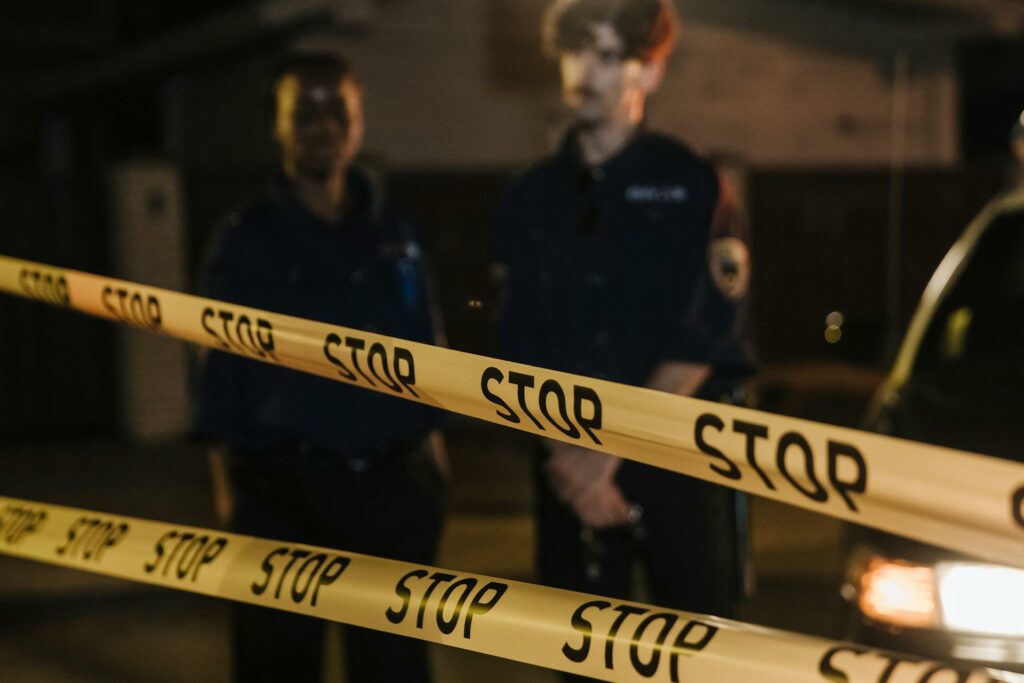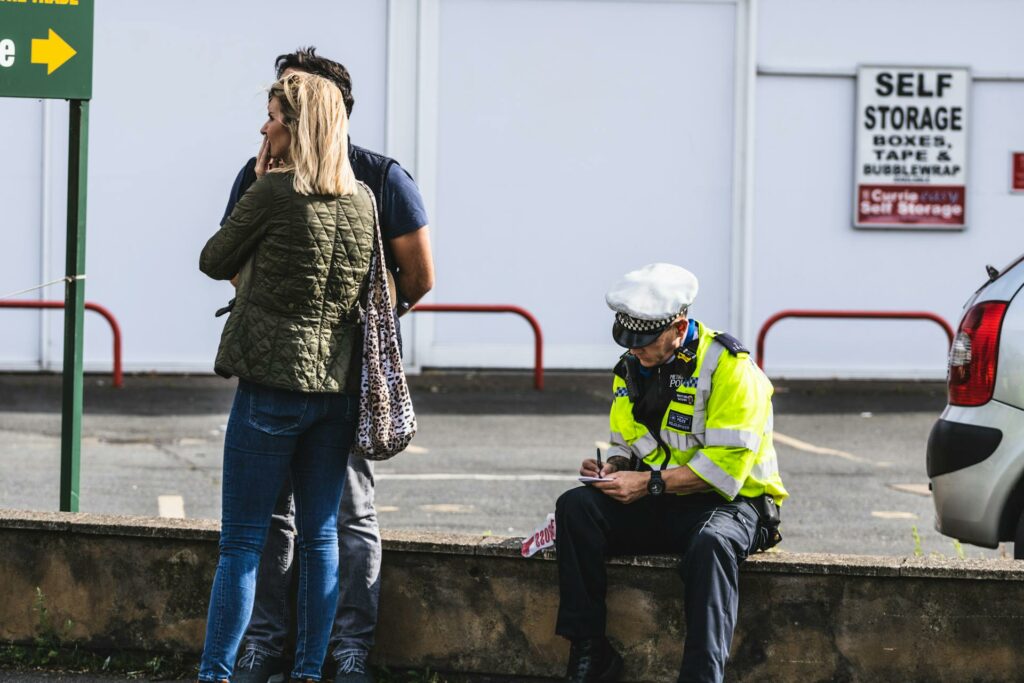In the domain of California car accident litigation, evidence is not merely supportive, but rather the linchpin of success. Gathering credible evidence such as police reports, medical records, and eyewitness accounts is essential for substantiating claims and countering opposing challenges. Each piece of evidence serves a unique purpose, building a robust case that can withstand scrutiny. Discovering how these elements interplay could be the key to securing a favorable outcome in court.
Understanding the Importance of Evidence in Car Accident Cases
In many car accident cases, the decisive factor that determines the outcome is the quality and depth of the evidence presented. For plaintiffs, evidence credibility stands as a cornerstone in shaping a successful case strategy. Attorneys meticulously evaluate the authenticity and reliability of evidence to build a compelling narrative. This strategic approach involves collecting extensive documentation, eyewitness accounts, and expert opinions, all of which bolster the case’s foundation. An evidence-driven strategy enhances the likelihood of a favorable verdict, emphasizing the client’s best interests. Additionally, credible evidence not only substantiates claims but also anticipates potential challenges from opposing parties. By prioritizing evidence credibility, legal representatives guarantee a robust defense against counterarguments, ultimately steering the case toward a just resolution.
Types of Evidence Essential for Your Claim
A compelling car accident claim hinges on the meticulous presentation of essential evidence types. High witness credibility is paramount, as credible testimonies can greatly influence the outcome of a case. Witnesses who are unbiased and consistent in their accounts lend weight to the claim, reinforcing the client’s position. Additionally, digital evidence plays an important role. Photos and videos captured at the scene can vividly depict the accident’s circumstances, while surveillance footage might provide an unbiased perspective of the events leading up to the collision. Furthermore, digital data from vehicle black boxes or GPS can offer precise details about speed and movement patterns, supporting the narrative of the incident. Together, these evidence types construct a robust foundation for a successful claim.

Gathering Police Reports and Accident Documentation
Securing police reports and thorough accident documentation is essential for strengthening any car accident case in California. These documents provide an objective account of the incident, capturing important details such as the involved parties, witness statements, and any citations issued. By meticulously gathering this evidence, clients can better substantiate their claims and increase the likelihood of a favorable outcome.
Obtaining Police Reports
Acquiring a police report can be an essential step in strengthening a car accident case in California. When pursuing a claim, having police report access guarantees you have a documented, unbiased account of the incident. This report serves as an authoritative source detailing the accident’s circumstances, parties involved, and potential traffic violations. The accuracy of this report is critical, as it can greatly influence the outcome of negotiations or court proceedings. Clients should verify report accuracy by checking details such as names, dates, and vehicle information. If discrepancies are found, contacting the officer who filed the report may be necessary for corrections. Ultimately, a precise and thorough police report can bolster a case, providing valuable leverage in achieving a favorable resolution.
Collecting Accident Evidence
Every successful car accident claim in California hinges on the meticulous collection of evidence. At the accident scene, it is vital to document every detail that could support the claim. This includes photographing vehicle damage, road conditions, and any visible injuries. Witness statements should be recorded promptly to guarantee accuracy. Evidence preservation is key; consequently, securing copies of medical records, repair estimates, and communication with insurance companies is essential. Gathering police reports is another critical step, as they provide an official account of the incident. These documents collectively form an all-encompassing picture of the accident, increasing the likelihood of a favorable outcome. A dedicated approach to collecting accident evidence can greatly bolster one’s case, making sure that justice is effectively served.
The Role of Medical Records in Establishing Injury Claims
Medical records are essential in substantiating injury claims in a California car accident case. Their importance cannot be overstated, as they provide tangible evidence that validates the injury claim. Detailed medical documentation establishes the extent of injuries sustained, linking them directly to the accident. This documentation includes physician notes, diagnostic tests, and treatment plans, all important for demonstrating the necessity and cost of medical care. Accurate records guarantee that there is a clear timeline of events, which is critical for any legal proceedings. These records offer an all-encompassing view of the impact on the individual’s health, thereby reinforcing the claim’s legitimacy. For clients, securing thorough medical documentation is a strategic step in pursuing a fair and just settlement.
Utilizing Witness Testimonies to Strengthen Your Case
While medical records lay the groundwork for substantiating injury claims, witness testimonies offer a compelling layer of support in a California car accident case. Eyewitness accounts provide an objective perspective, potentially corroborating a victim’s version of events. Such testimonies can detail the sequence of events leading to the accident, driver behavior, and environmental conditions, offering a robust narrative that complements medical documentation. The testimonial credibility of witnesses, often evaluated by their consistency and reliability, is vital in swaying judicial decisions. Selecting credible witnesses with clear, firsthand observations is fundamental. Legal professionals must ascertain these accounts are preserved accurately and presented effectively, as they can greatly impact the outcome of a claim by reinforcing the authenticity of the plaintiff’s assertions.
Collecting and Preserving Photographic and Video Evidence
In the aftermath of a car accident, the swift collection and preservation of photographic and video evidence are essential for substantiating claims and protecting one’s legal rights. Capturing scene details such as vehicle positions, road conditions, and any visible damages provides a thorough snapshot of the incident, while dashcam footage can offer an unbiased, real-time account of the events leading up to and during the crash. By prioritizing timely documentation, individuals greatly enhance their ability to present compelling evidence that supports their case in California’s complex legal landscape.
Importance of Timely Documentation
Capturing photographic and video evidence promptly after a car accident is vital for building a strong case. Timely evidence serves as a reliable foundation for any legal proceedings, offering irrefutable proof of the accident’s circumstances. Effective documentation strategies include taking clear photos and videos of the vehicles involved, road conditions, and any visible injuries. This approach guarantees that essential details are preserved before they can be altered or forgotten. By prioritizing the collection of evidence, clients can strengthen their position in negotiations or court. Such documentation not only supports the client’s claims but also counters opposing narratives. Ultimately, these strategies empower individuals to effectively advocate for their rights, securing they have the best possible chance of a favorable outcome.
Capturing Scene Details
Collecting and preserving photographic and video evidence is a fundamental step in securing a robust legal stance after a car accident. Detailed images and videos capture vital aspects such as vehicle positions, damages, and road conditions, which can be pivotal in establishing liability. Scene sketches complement these visuals, offering an all-encompassing understanding of the accident’s dynamics. In conjunction with eyewitness accounts, they create a compelling narrative that strengthens a claimant’s position. By thoroughly documenting the scene, one guarantees that fleeting details, like skid marks or weather conditions, are not lost over time. This diligence can be the difference between a successful claim and a protracted legal battle. Consequently, investing effort in capturing scene details is essential for anyone involved in a car accident.
Utilizing Dashcam Footage
Although often overlooked, dashcam footage can be an essential asset in the aftermath of a car accident. The dashcam benefits are numerous, offering a reliable account of events as they unfold in real-time. This footage reliability can be instrumental in establishing fault, as it captures uncontested evidence that may not be visible to the naked eye or remembered accurately by witnesses. In California car accident cases, having this tangible proof can greatly strengthen a client’s position, ensuring that claims are substantiated with solid evidence. Furthermore, dashcam footage can help counter false narratives and protect against fraudulent claims. For clients seeking to maximize their chances of a favorable outcome, investing in a dashcam and preserving its footage can be a decisive strategic move.
Leveraging Expert Testimonies for Technical Insights
In the complex landscape of California car accident litigation, expert testimonies serve as invaluable assets, providing technical insights that can markedly influence the outcome of a case. Through expert analysis and technical evaluations, specialists offer clarity on intricate details such as vehicle dynamics, road conditions, and impact forces. Their contributions can be pivotal in establishing liability and demonstrating the extent of damages. By distilling complex data into comprehensible information, experts enhance a jury’s understanding, ensuring informed decision-making. Additionally, their unbiased perspectives lend credibility to the claims, solidifying the foundation of a plaintiff’s argument. Engaging authoritative voices in accident reconstruction or biomechanics can notably bolster a case, reinforcing the narrative with precise, objective insights that resonate with legal standards and factual accuracy.
Navigating Legal Procedures for Evidence Submission
Successfully maneuvering the legal procedures for evidence submission is essential in fortifying a car accident case in California. The intricate legal landscape demands meticulous attention to detail, particularly in adhering to legal timelines that govern when and how evidence must be presented. Missing these critical deadlines can severely undermine a case, diminishing the effectiveness of even the most compelling evidence. To guarantee that evidence submission is both timely and strategic, claimants must be well-versed in California’s specific procedural requirements. This includes understanding the nuances of pre-trial discovery, disclosure obligations, and the necessary documentation that substantiates claims. By taking these steps, individuals can markedly bolster their chances of success, compellingly presenting their case and guaranteeing their rights are robustly defended in court.
Tips for Collaborating With Your Legal Team to Build a Strong Case
A critical component of optimizing the outcome of a car accident case in California involves effective collaboration with one’s legal team. Implementing collaboration strategies guarantees that each member of the team is aligned with the client’s goals. Clients should establish clear communication methods, such as regular updates and scheduled meetings, to maintain transparency and trust. Detailed documentation of all case-related information, such as medical records and witness statements, aids in building a robust case. Encouraging open dialogue allows clients to voice concerns and ask questions, fostering a cooperative environment. By keeping all parties informed and engaged, the legal team can strategically navigate complex legal landscapes, ultimately enhancing the probability of a favorable outcome in a California car accident case.
Frequently Asked Questions
How Can Social Media Posts Affect My Car Accident Case?
Social media posts can greatly impact a car accident case by affecting one’s online reputation and challenging social media privacy. Careless sharing might contradict claims, influencing perceptions and potentially undermining the client’s legal position and credibility.
What Steps Should I Take Immediately After a Car Accident?
After a car accident, one should prioritize seeking immediate medical attention and guarantee a police report is filed. These steps are essential for documenting evidence and protecting one’s rights, enhancing the chances of a favorable case outcome.
Can Dashcam Footage Be Used as Evidence in Court?
Dashcam footage, given its reliability, can be vital evidence in court. Its legal admissibility depends on authenticity and relevance to the case. Consulting with legal experts guarantees the footage effectively supports the client’s car accident claim.
How Long Do I Have to File a Car Accident Claim in California?
In California, understanding the filing deadline is essential for pursuing a car accident claim. Typically, the claim timeframe is two years from the accident date. Prompt action guarantees rights are protected and potential compensation maximized.
What Should I Avoid Saying to Insurance Adjusters After an Accident?
When communicating with adjusters, one should avoid admitting fault or downplaying injuries. Insurance tactics often aim to minimize claims. Clear, factual, and careful adjuster communication is essential for protecting one’s interests and ensuring fair compensation.

